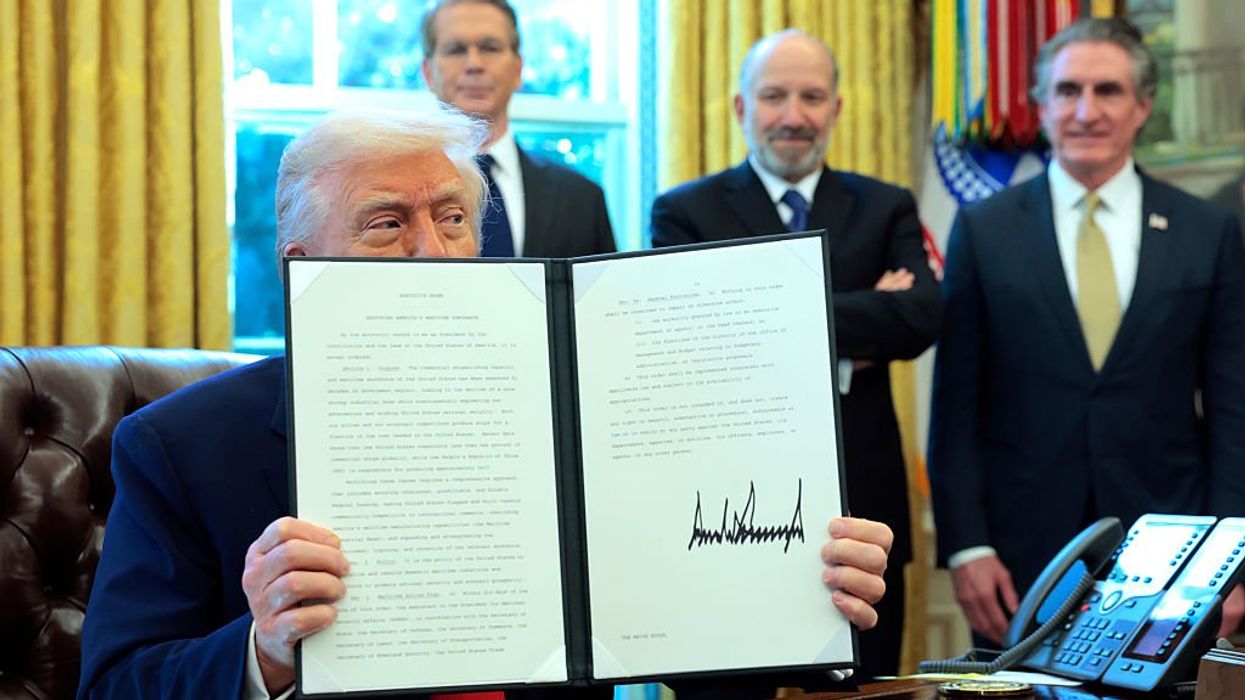In his April 2 executive order on tariffs and previous orders announcing tariffs on Chinese, Canadian, and Mexican imports, President Trump used the National Emergencies Act of 1976 (NEA) and the International Emergency Economic Powers Act (IEEPA) of 1977.
This raises two important questions: Do the National Emergencies Act and IEEPA allow the President to set tariffs, and is the current economic state actually an emergency? (We also covered some tariff history on our full post here, and here on the projected impact, Trump's rationale, and Congress's response.)
Emergency and I: Who has the power to levy tariffs
Congress — not the President — has the authority under Article I, Section 8 of the Constitution to create taxes including tariffs ("imposts") and the power to regulate trade with foreign countries. Over the 20th Century, however, Congress delegated considerable authority to set trade agreements to the President. But Trump didn't use these authorities: He used powers granted to by Congress under national emergency law to set the April 2 tariffs.
The National Emergencies Act created a formal process for the President to declare a national emergency, and IEEPA allows Executive Branch departments broad authority to sanction and freeze assets of foreign actors once an emergency is declared.
How trade policy fits under IEEPA is questionable. It actually was designed to limit presidential power in the wake of the Vietnam War and Watergate, the law does not mention tariffs, and no other president has used the act to impose tariffs, even as declarations of national emergencies under IEEPA have grown over recent decades. Critics of the action arguethat the only instance in case law that would support interpreting presidential tariff power under the act involved a temporary action taken by the Nixon Administration under the law IEEPA replaced.
"The Constitution forbids it," said Republican Sen. Rand Paul on emergency powers to set tariffs. And a lawsuit has been filed challenging it. (Also of note, a Senate bill to limit the President's power to set tariffs has seven Republican cosponsors, making it likely to pass the Senate, but it may be dead-on-arrival in the House.)
Trump has used other trade powers previously. For example, Section 232 of the Trade Expansion Act of 1962 authorizes the President to raise tariff rates on goods the Department of Commerce determines are being imported in ways that threaten national security. Section 301 of the 1974 Trade Act allows the President to raise tariffs on goods the U.S. International Trade Commission finds are being imported at levels that harm domestic industry. It also allows the U.S. Trade Representative to impose tariffs on countries that harm U.S. commerce in "unjustifiable," "unreasonable," or "discriminatory" ways like failing to protect American firms' intellectual property or using child labor. The Trump Administration has cited these mechanisms in its rollout of several tariffs: It justified tariffs of 25% on autos and auto parts from Canada and Mexico on March 26 under Section 301 of the Trade Act of 1974 and Section 232 of the Trade Expansion Act of 1962.
What exactly is the emergency?
The April 2 executive order includes its basis for declaring a national emergency:
"Large and persistent annual U.S. goods trade deficits have led to the hollowing out of our manufacturing base; inhibited our ability to scale advanced domestic manufacturing capacity; undermined critical supply chains; and rendered our defense-industrial base dependent on foreign adversaries. . . . These conditions have given rise to the national emergency that this order is intended to abate and resolve."
The trade deficit is the amount the United States imports minus what it exports, and it has been growing steadily for 30 years, and especially since the COVID-19 pandemic began in Trump's first term. In other words, the United States imports far more goods than it exports. (A trade deficit in goods, which excludes the U.S.'s export of services, isn't necessarily a bad thing.)
Congress passed the National Emergencies Act and IEEPA to enable the President to respond quickly to swift-moving international crises potentially impacting national security. Compare that with the executive order's language that calls the trade deficit "persistent" 10 times (and "persistent decline in U.S. manufacturing output" once).
A 1977 House committee report on IEEPA stated any declared "emergency should be terminated in a timely manner when the factual state of emergency is over and not continued in effect for use in other circumstances." But despite the law's intentions, that's not how the law has been used in the past. As this Congressional Research Service report notes, national emergencies can last indefinitely and the courts have rejected most challenges to the presidential authority under IEEPA:
"As of January 15, 2024, Presidents had declared 69 national emergencies invoking IEEPA, 39 of which are ongoing. History shows that national emergencies invoking IEEPA often last nearly a decade, although some have lasted significantly longer—the first state of emergency declared under the NEA and IEEPA, which was declared in response to the taking of U.S. embassy staff as hostages by Iran in 1979, is in its fifth decade."
The presidential definition of crisis also has broadened in recent years to include investment in Chinese industry and the international drug trade. President Trump threatened to invoke IEEPA to levy tariffs on Mexico because of illegal immigration during his first term.
Courts are unlikely to weigh in on what is or isn't an emergency. Congress could end the practice of decades-long "emergencies," but it probably won't.
President Trump Invokes Emergency Powers for New Tariffs was originally published by GovTrack and is shared with permission.
Chris Nehls does consulting for POPVOX Foundation on strategy, communications, and philanthropic outreach.




















